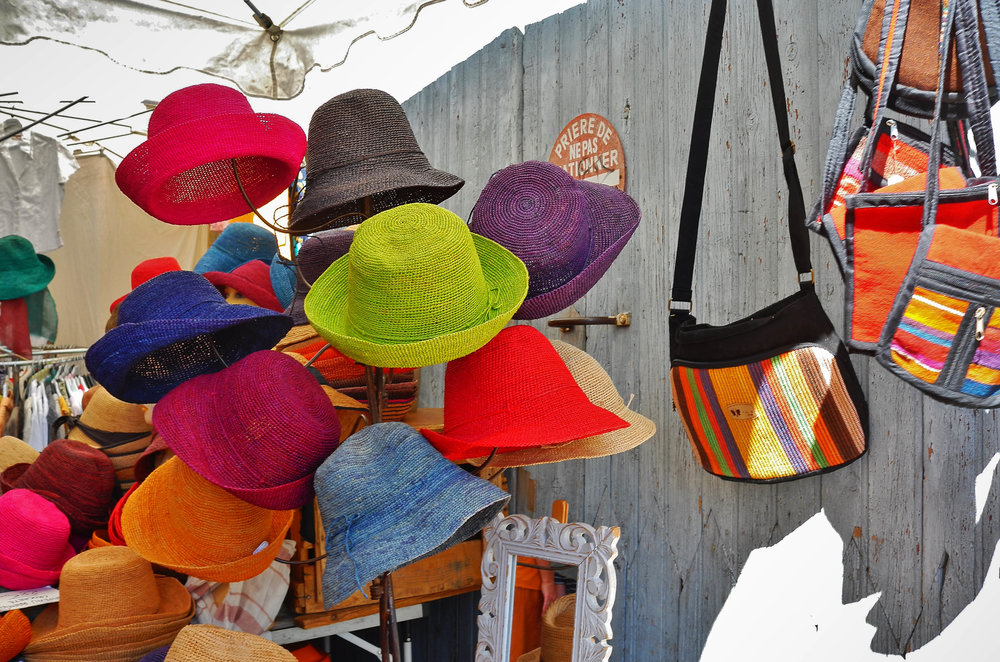
My previous Macfilos articles have all been based on my faithful Ricoh GR. But last year I managed to buy a used Leica X2 and during 2018 I’ve been using it more and more.
Last summer, instead of going abroad or to faraway places as my wife and I usually do, we decided to stay home in France. The geography was quite simple, we did it north and south or, rather, south and north. No, we didn’t meet the descendants of Elizabeth Gaskell’s novel, so there was neither a Margaret Hale nor a John Thornton on our travels. We started with le Lubéron in Provence, which has become somewhat talked about in Peter Mayle’s novel, A Year in Provence.
I took only the Leica X2 that I had purchased secondhand a year before, as I wanted to travel light as usual. I truly love and bond with the camera (thank you, John Shingleton — Mr X1 — for influencing me in buying one after seeing your photos) and had the opportunity to dig a bit into it, having time to explore the various possibilities the camera offers in a split second. I did not miss my Ricoh at all and enjoyed the one focal length.
I had already been in Lubéron some 35 odd years ago and the countryside hadn’t changed much. The roads, of course, were better and we had to pay to visit the tourist sites which used to be free. The two things that we both truly enjoyed were the former ochre quarries and the lavender fields.
Click on any image to view full size
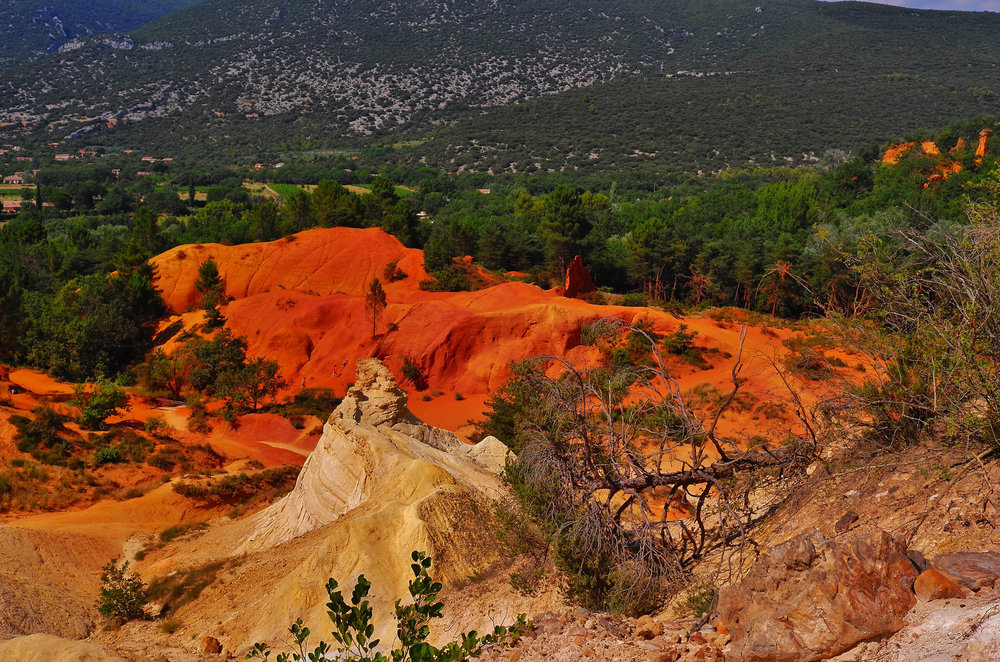
Even in the midday sun under scorchingly heat, these spots are really amazing. One of the sites is even called the French Colorado, but I think the tourist office is exaggerating here. (Forgive me, though, because you know how French people are).
The other thing I like around Provence are the cafés where people enjoy having a drink in the morning or late afternoon
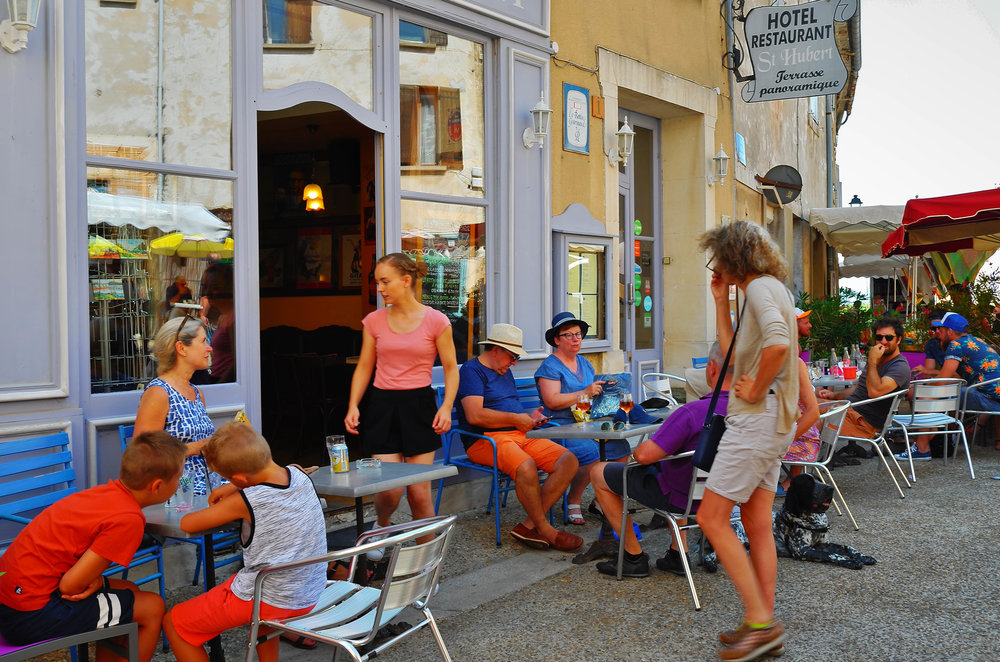
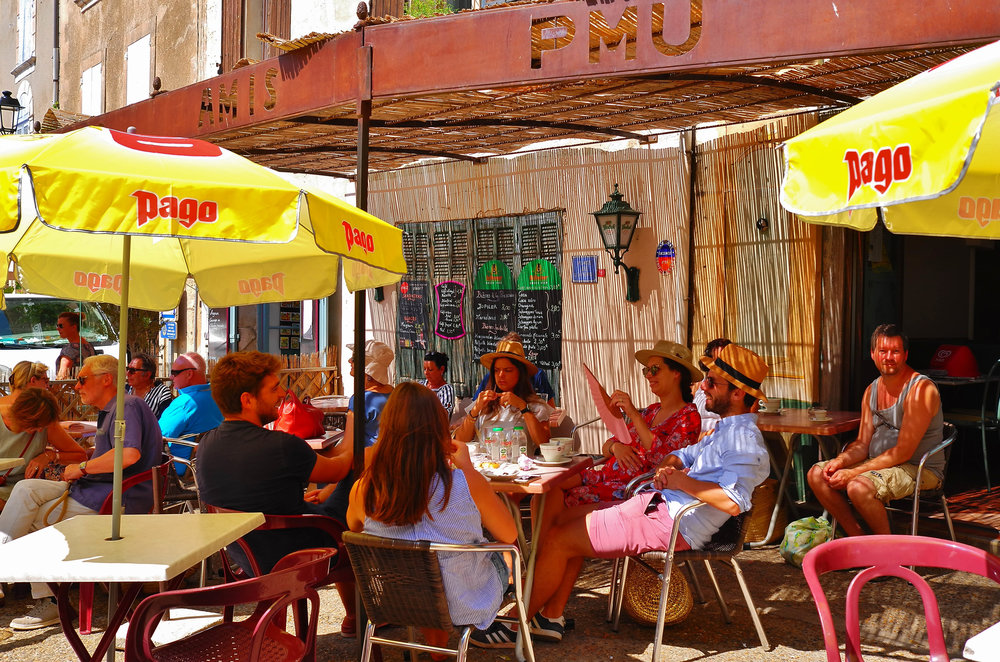
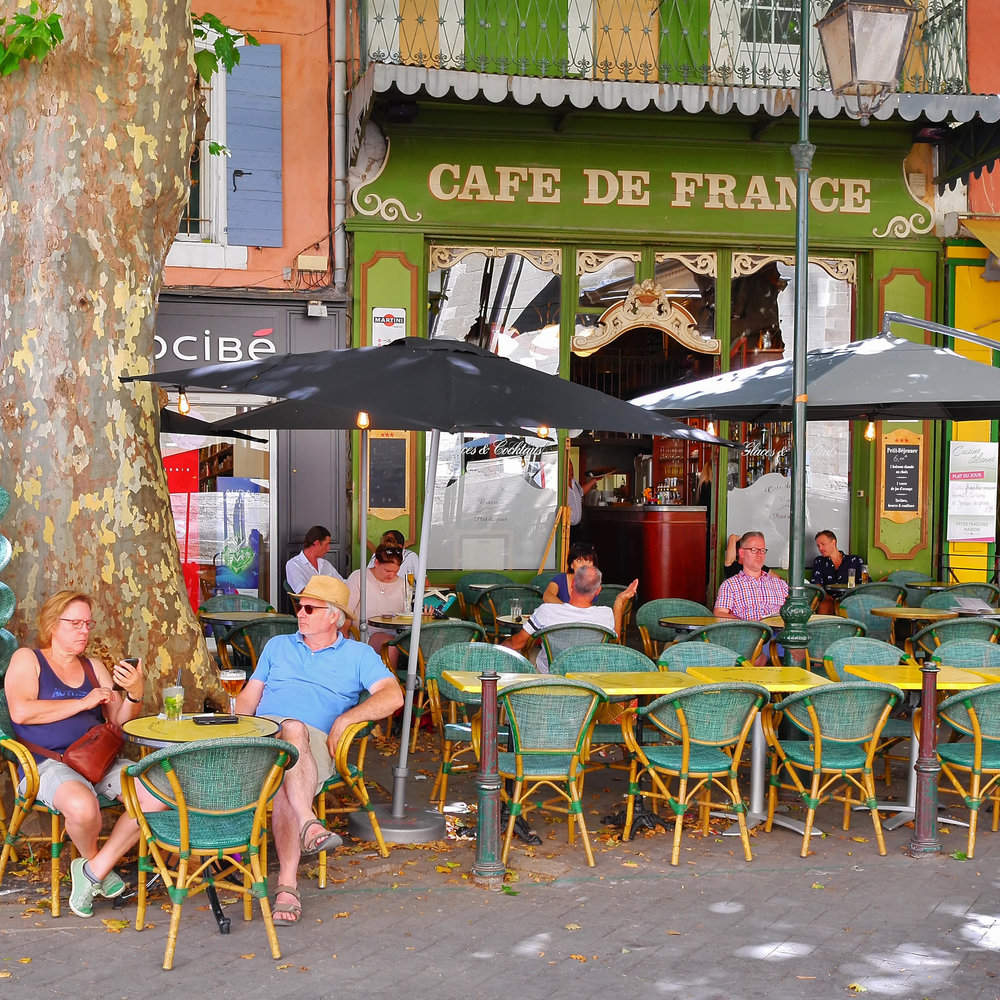
They are sort of social places where locals and strangers — “ les estrangers” as the local would say — can mingle.
I did try shots from lavender fields but they all looked alike so I gave up. I guess macro shots would have been be nice, but I couldn’t get close enough with the X2.
We ended up our trip with a visit to l’Isle sur la Sorgues, a town surrounded by a river. It became famous thanks to the French poet René Char whom I discovered while at university
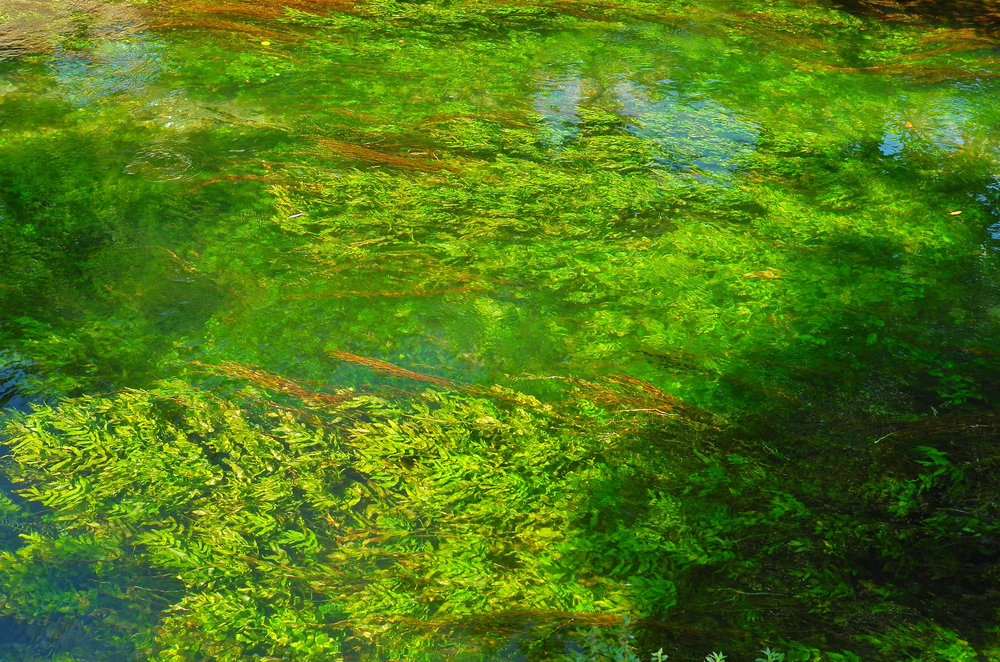
It was time to move north to Brittany. The climate was quite a shock as we had a 20° drop in temperature. The sun shone only for a day or two, but the place was truly amazing. We had been there before when our children were young, thirty years ago, and remembered how the weather was terrible down there. But the place is still beautiful. Here are a few shots I made there.
The first ones are of a little harbour in Penmarch that changes with the tides. When the tide’s out the small boats are all stranded and there’s a pungent smell of seaweeds; but when the tide comes in on a windless day there are beautiful reflections.
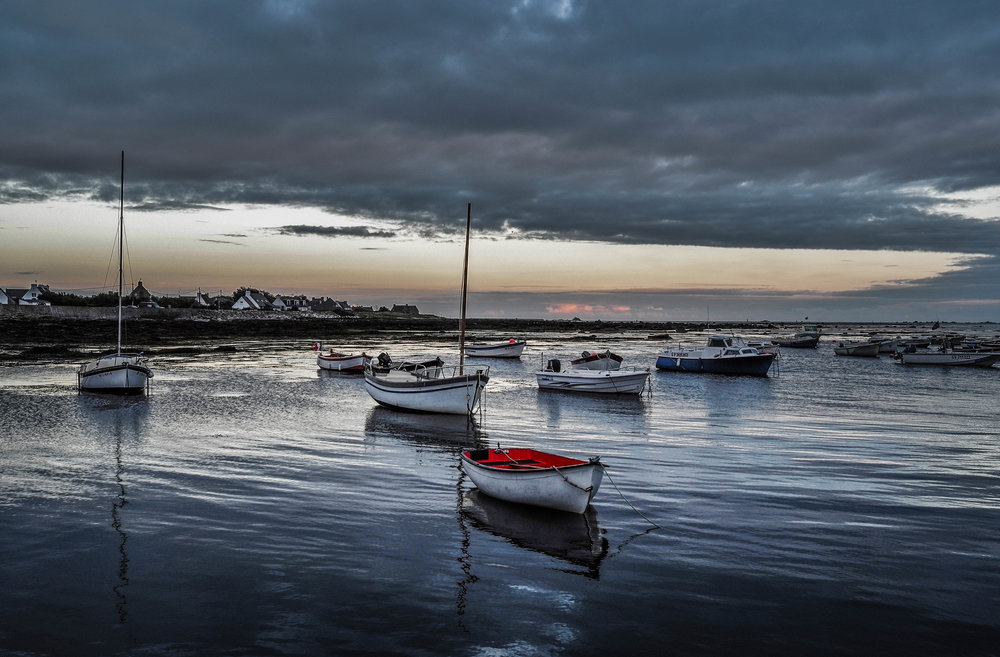
These images are of the little local fishing harbour of St Ghénolé. It used to be quite busy, but with global warming there tend to be fewer activities than in the past. The place comes lively in the morning and late in the evening
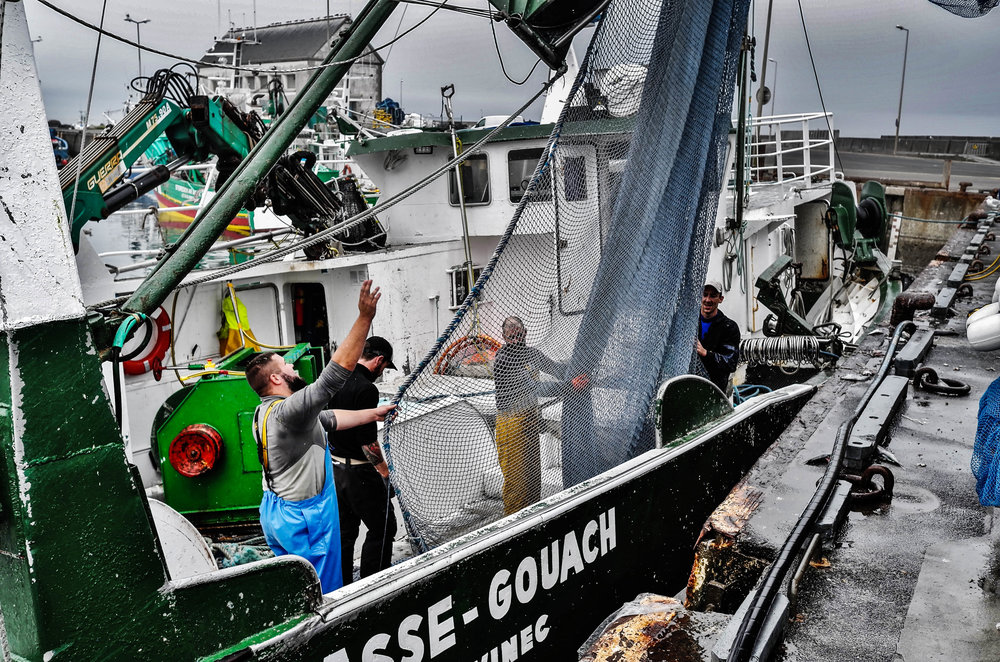
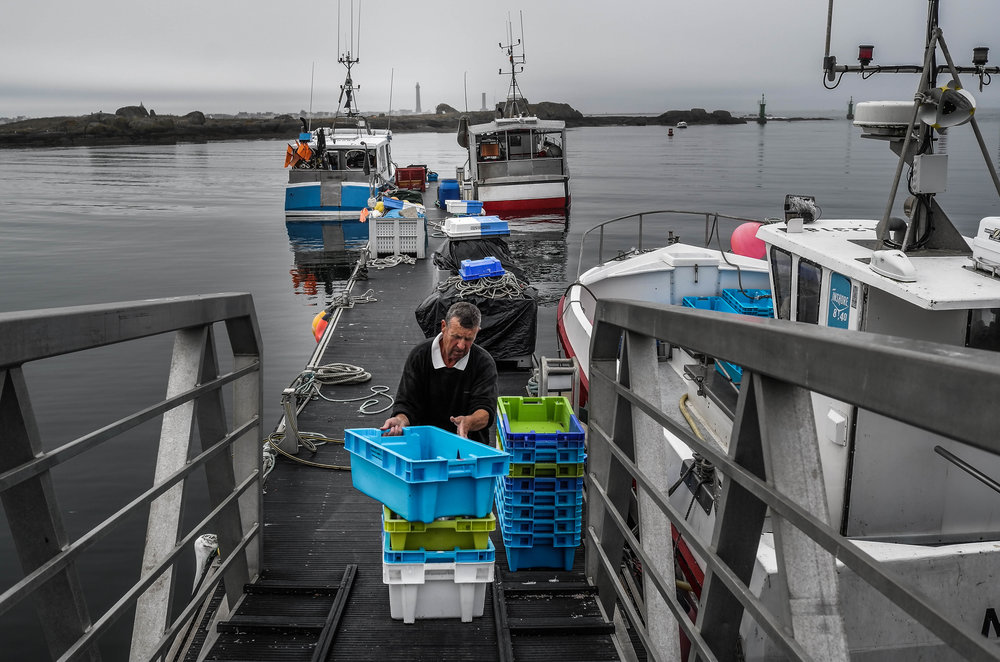
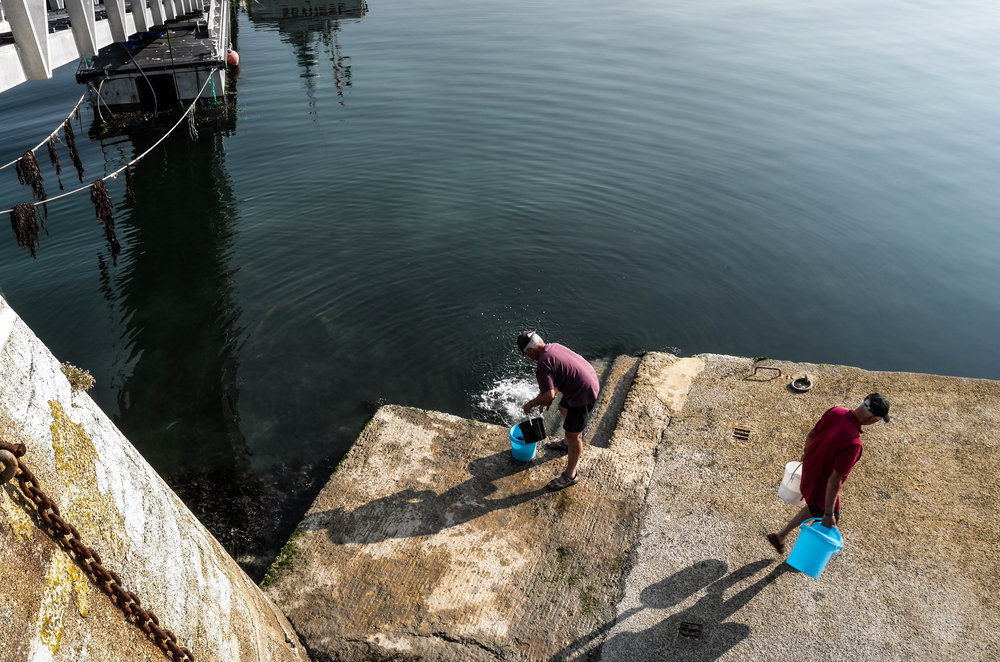
That pic was taken near la Pointe du Raz, the French version of Land’s End. The weather was greyish and misty, but I just loved the atmosphere you had on that day, It’s not far from la Baie des Trépassés (something like the bay of the dead) because the sailors who had perished at sea were brought ashore on the bay. That’s what the local legends says
The last shot (insert photo 14) was taken on the all-too rare sunny day we had at la Pointe de la Torche, a magnet for surfers that’s always busy when the waves are decent. I guess it must be like some of the West Country surfing beaches around Bude in Cornwall.
Some of you may object to my contrasty post-processing, but I like to have the shots printed on Canson photo paper and the result on that paper with such contrast is really fine. In the days of the darkroom, when I used to develop my pictures, I always used Ilford Grade 4 contrast paper and never looked back. I like the rendering, though I must admit I’m losing some of the transition between colours. I think it’s where the Leica shines. That little Elmarit lens is so sharp and so contrasty that there’s little to be done in post to adapt to my taste.

Lovely photo’s, Jean
The MLM (Macfilos LeicaX Mafia) continues to tempt me with their product promotions!
Thanks Dave, that spot in Brittany is quite special for me, probably as special as Whitby for you. Thinking of buying an X1 if I can find one in mint condition
Jean
You could end up with the greatest collection X’s out there, surely the X2 is good enough. I love my X typ 113, but wouldn’t consider buying earlier editions, even though I know they have charm.
Dave
I’ve looked for the X typ 113 and would love to have one though that would mean investing in another viewfinder, different from the X2 but the ones I’ve seen are still too expensive so I keep looking but as sleeping beauty would say some day my X will come
Jean
A lovely article Jean, I read this at work, and then have reread it tonight, more because I wanted to study your images on my Mac, as against my work based windows PC with its cheap screen. The images on my MacBook screen certainly look excellent, and the post processed contrast looks very nice.
I really like the cloudy bay with the boat reflections, true coastal scenery on a moody day.
Thank you for sharing your X2 experience, I wonder how many X’s Mr X has managed to sell on Leica’s behalf – he should claim royalties from them. (Only joking John, honest..)
Dave S
Really nice photos and a good rundown! Many thanks.
Thanks Jason
Jean, I enjoy very much your photo of the plants in the water, it reminds me of a painting by Monet in his garden. My X1 rarely disappoints. Kevin
Thank you Kevin. I love these water plants. There are some similar plants in a park near home but they’re not as dense and the river or I’d rather say the burn they grow in is much smaller.
Jean
I have read your X2 journey with great interest and enjoyed your photos immensely. They have one thing in common with John Shingleton’s, and that is: spaciousness. So I am thinking this is what spending time with an X1 or 2 does to people. I also have an X2 (which I love to have in my hand), but the breakthrough han’t come yet for me, so I can learn a lot from your way of composing. Thank you.
Thank you John
Thank you John. I must admit the X2 is really addictive. I did try the Q at a Leica workshop over the weekend at home. The images it produces are absolutely stunning but I prefer the crispness of the X2 files. The Q is too perfect for me and need far more postprocessing to have a result to my liking. For me the only advantage is the 28mm lens which I’m quite used to with the ricoh gr although I rarely pick it up nowadays. I mainly use the X2 and otherwise pick up the ricoh grd4 with its small ccd sensor as it is the closest to the X2 rendering. I’ll buy a X1as a backup if I can find one in good condition but it’s hard to find. Hopefully I’ll be visiting my daughter in Exeter over Christmas and will be checking the Leica dealers in Bath as she’s planning to take us there when we’re in Britain.
Jean
Really enjoyed your X2 photos, I think a lot of us appreciate the work of Mr.X1 (or should I say KING) and this weekend I spent rereading HCB photo books, that BRIE tree photo always jumps out at you! Thanks also to Mike for those of us who use X’s for all the articles, I look forward to your nextX2 trip.
Thank you John. as far as HCB and his poplar tree shot it’s a pity that they’re disappearing on French roads because of road safety. I remember they made childhood trips so pleasant with the light on and off for miles.
Jean
Lovely photos Jean. My wife and I had a holiday in Provence in 2003 and I think that I recognise some of the locations that you have shown. I believe that the ochre mines are those at Roussillon, the materials from which have been used to colour the houses in the village, producing a memorable sight. I was using film at that time (with a Nikon F80) and I have some nice scans of photos from the Luberon valley which I will send to Mike to forward to you.
One little story from our visit concerns perhaps the most famous Leica photographer of all, Henri Cartier Bresson. On the eastern approach road into a town called Cereste in the Luberon valley there is a line of trees alongside the road such as are commonly found in France. These so resembled the trees in the famous ‘Near Brie’ photo by Cartier Bresson that we christened them ‘the Cartier Bresson trees’ and commented on this every time that we passed along the road. About 11 months later Cartier Bresson died and we found out that he had been living for some time near Cereste at the time of his death and actually died in the town. His grave is in the nearby town of Montjustin which we also visited.
William
Thanks for your kind comment. The first photo was indeed taken at the ochre quarry in Roussillon. It’s true the colours of the houses come from the quarry. The two others were taken in Rustrel about 10 kilometres from Roussillon. The spot is really amazing. I just got black and white photos of the place (minolta srt 100 and its 45mm lens) some 30 odd years ago, that I used to process and print myself. As for the trees of Cartier-Bresson I guess they are poplar trees. Unfortunately most trees tend to be cut down when close to a road because of car accidents. I had some child memories when it was good to drive in the shade of poplar trees.
Gorgeous ochre colour in the first landscapes Jean. Thank you.
Thanks David